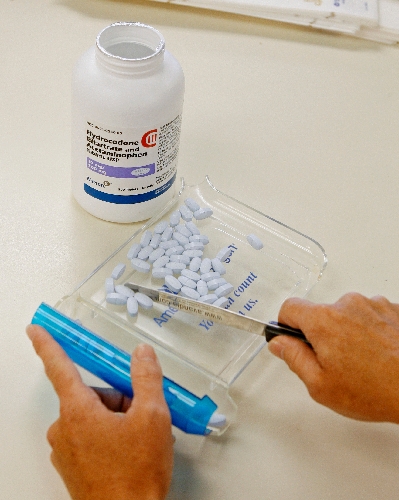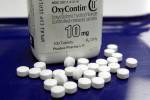Painkiller overdose deaths triple in U.S.
The number of overdose deaths from powerful painkillers more than tripled over a decade -- a trend that a U.S. health official called an epidemic, but one that can be stopped.
Prescription painkillers such as OxyContin, Vicodin and methadone led to the deaths of almost 15,000 people in 2008, including actor Heath Ledger. That's more than three times the 4,000 deaths from narcotics in 1999.
Such painkillers are meant to help people who have severe pain, said Dr. Thomas Frieden, director of the Centers for Disease Control and Prevention in Atlanta, which issued the report in November.
"They are, however, highly addictive," he said.
The report shows that nearly 5 percent of Americans ages 12 and older said they've abused painkillers in the past year -- using them without a prescription or just for the high. In 2008-09 surveys, Oklahomans reported the highest rate of abuse; Nebraska and Iowa had the lowest rate of abuse.
The overdose deaths reflect the spike in the number of narcotic painkillers prescribed every year -- enough to give every American a one-month supply, Frieden said.
Prescriptions rose as doctors aimed to better treat pain and as new painkillers hit the market.
Frieden and White House drug czar Gil Kerlikowske, who joined him at CDC headquarters in Atlanta, said states must act forcefully to reverse the long-running trend.
States oversee prescription practices and can rigorously monitor prescriptions and crack down on "pill mills" and "doctor shopping" by patients, Frieden said.
Doctors should limit prescriptions -- giving only a three-day supply for acute pain, for example -- and should look for alternative treatments, he said.
"For chronic pain, narcotics should be the last resort," he said.
A federal drug plan announced this year calls for state programs to track prescriptions.
All but two states -- Missouri and New Hampshire -- have approved them, Kerlikowske said. But several states don't have them in place yet or doctors aren't using them enough to check on their patients' past prescriptions, he said.
"America's prescription drug abuse epidemic is not a problem that's going to be solved overnight, but at the same time, we're not powerless," said Kerlikowske, who urged parents to get rid of unneeded or expired painkillers so they aren't misused.
Some states are acting. Earlier this month, a doctor in Southern California was sentenced to prison for illegally selling tens of thousands of prescriptions for painkillers and sedative. Ohio now requires pain clinics to be licensed by the state, and limits the amount of pills that can be dispensed at clinics. Florida also has cracked down on so-called "pill mills."
Overall, there were 36,450 fatal overdoses in 2008, including accidental cases and suicides involving illegal drugs like heroin and cocaine along with prescription medicines. About three-quarters of the deaths from prescriptions involved narcotic painkillers.
That's the year Ledger died from an accidental overdose of painkillers and sedatives. A few months later, a 12-year-old girl from suburban New York overdosed on methadone she bought from a 15-year-old boy.
Narcotics also factored in the recent deaths of a 27-year-old model at the mansion of an Anheuser-Busch heir and of former hockey player Derek Boogaard.
CDC REPORT
cdc.gov/mmwr/
PAINFUL REPORT
Other findings of the CDC report on painkillers:
• New Mexico had the highest overdose death rate (27 per 100,000) and Nebraska had the lowest (5.5). The national rate was 11.9.
• Fatal overdoses were more likely in men, middle-aged adults and whites and American Indians.
• Sales of prescription painkillers are highest in the Southeast and Northwest.
Frieden noted the wide differences between overdose death rates among states. For example, West Virginia's rate is about 26 per 100,000 while neighboring Virginia's rate is 9 per 100,000.
"This highlights the importance of states getting policies right on preventing drug abuse," he said.




























